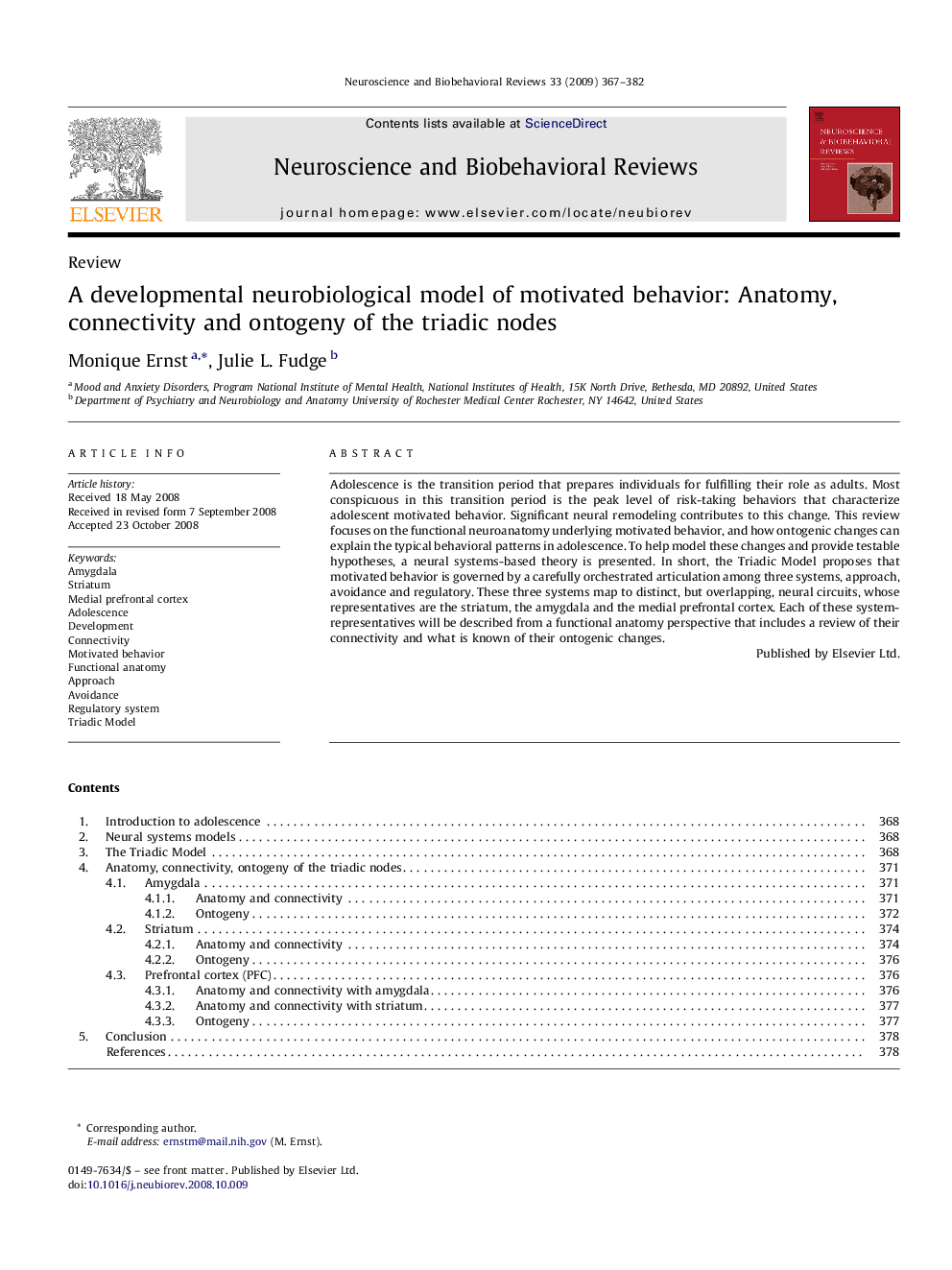| کد مقاله | کد نشریه | سال انتشار | مقاله انگلیسی | نسخه تمام متن |
|---|---|---|---|---|
| 938175 | 924591 | 2009 | 16 صفحه PDF | دانلود رایگان |

Adolescence is the transition period that prepares individuals for fulfilling their role as adults. Most conspicuous in this transition period is the peak level of risk-taking behaviors that characterize adolescent motivated behavior. Significant neural remodeling contributes to this change. This review focuses on the functional neuroanatomy underlying motivated behavior, and how ontogenic changes can explain the typical behavioral patterns in adolescence. To help model these changes and provide testable hypotheses, a neural systems-based theory is presented. In short, the Triadic Model proposes that motivated behavior is governed by a carefully orchestrated articulation among three systems, approach, avoidance and regulatory. These three systems map to distinct, but overlapping, neural circuits, whose representatives are the striatum, the amygdala and the medial prefrontal cortex. Each of these system-representatives will be described from a functional anatomy perspective that includes a review of their connectivity and what is known of their ontogenic changes.
Journal: Neuroscience & Biobehavioral Reviews - Volume 33, Issue 3, March 2009, Pages 367–382